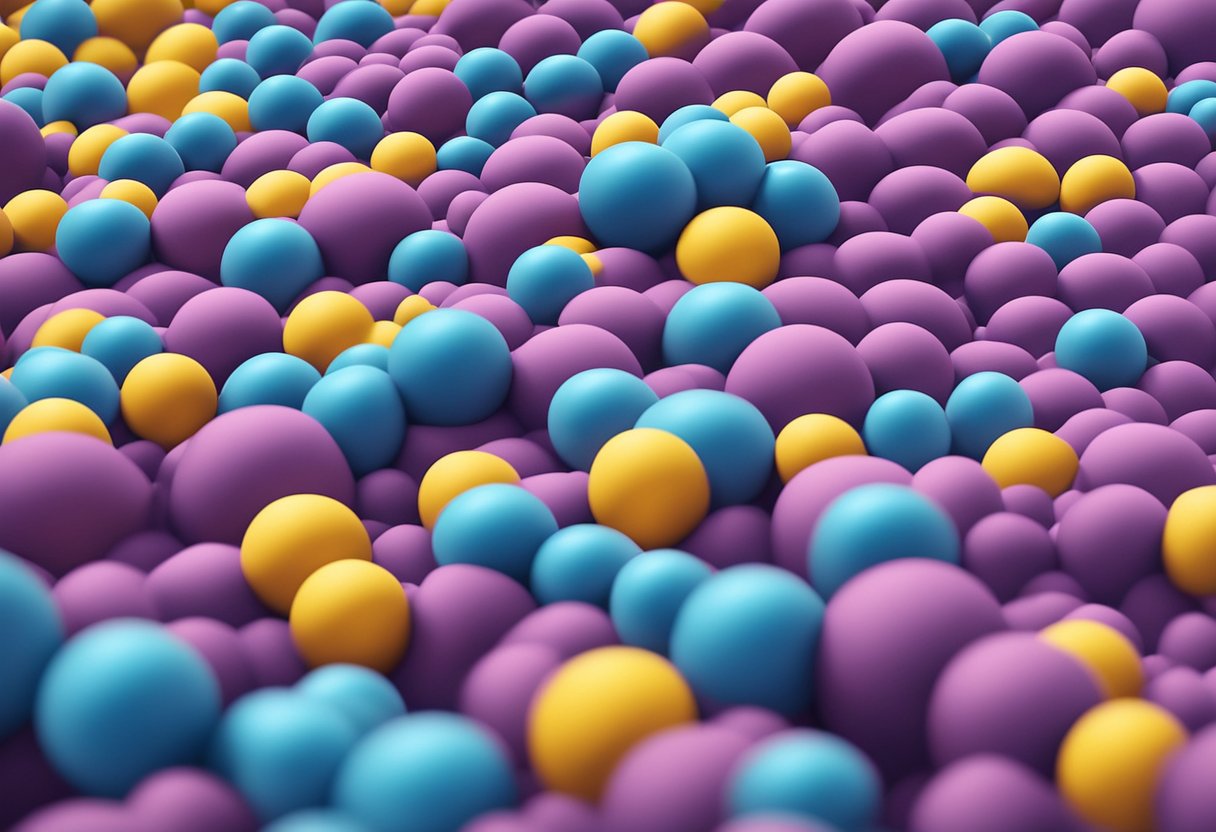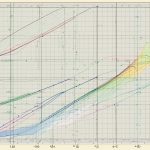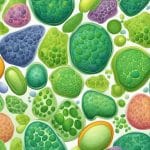Types Of Active Transport
Active transport is a crucial process in which cells move molecules against their concentration gradient. This process requires energy and is essential for various cellular processes. Active transport is divided into two categories: primary and secondary active transport. Primary active transport uses ATP as the source of energy, while secondary active transport uses the electrochemical gradient.

During primary active transport, a protein pump uses ATP to move molecules across the cell membrane against their concentration gradient. The sodium-potassium pump is an example of primary active transport. This pump moves sodium ions out of the cell and potassium ions into the cell, which helps maintain the cell’s resting potential. Secondary active transport, on the other hand, uses the energy stored in the electrochemical gradient to move molecules across the cell membrane.
Key Takeaways
- Active transport is an energy-requiring process that moves molecules against their concentration gradient.
- Primary active transport uses ATP as the source of energy, while secondary active transport uses the electrochemical gradient.
- The sodium-potassium pump is an example of primary active transport, while symport and antiport are examples of secondary active transport.
Fundamentals of Active Transport
Active Transport vs. Passive Transport
Active transport and passive transport are the two main methods by which substances move across the cell membrane. Passive transport is the movement of substances from an area of high concentration to an area of low concentration, while active transport is the movement of substances from an area of low concentration to an area of high concentration. The key difference between the two is that active transport requires energy, while passive transport does not.
The Role of ATP in Active Transport
Active transport requires energy in the form of ATP (adenosine triphosphate) to move substances against their concentration gradient. ATP is a molecule that stores energy and is used by cells to power various cellular processes, including active transport. When ATP is hydrolyzed, it releases energy that can be used to power active transport.
Cell Membrane and Transport Proteins
The cell membrane is a phospholipid bilayer that separates the inside of the cell from the outside environment. The membrane is selectively permeable, meaning that it allows some substances to pass through while blocking others. Transport proteins are membrane proteins that help move substances across the membrane. They can be either channels or carriers. Channels provide a pathway for substances to move through, while carriers bind to a specific substance and transport it across the membrane.
Active transport is an essential process for many cellular functions, including the maintenance of ion gradients, the uptake of nutrients, and the removal of waste products. It is powered by ATP and requires transport proteins to move substances across the plasma membrane. Understanding the fundamentals of active transport is crucial for understanding cellular physiology and the mechanisms by which cells maintain homeostasis.
Primary Active Transport
Primary active transport is the process of moving molecules against their concentration gradient, which requires energy in the form of ATP hydrolysis. This process is carried out by specific membrane proteins called ion pumps. In this section, we will discuss the three major types of ion pumps involved in primary active transport: sodium-potassium pump, calcium pump, and hydrogen ion pumps.
Sodium-Potassium Pump
The sodium-potassium pump is a type of ion pump that moves sodium ions (Na+) out of the cell and potassium ions (K+) into the cell. This pump is found in all animal cells and is responsible for maintaining the resting membrane potential of cells. The pump uses ATP hydrolysis to move three Na+ ions out of the cell and two K+ ions into the cell. This creates an electrochemical gradient across the membrane, which is important for many cellular functions, such as nerve impulse transmission and muscle contraction.
Calcium Pump
The calcium pump is another type of ion pump that moves calcium ions (Ca2+) out of the cell or into the intracellular compartments. This pump is found in all eukaryotic cells and plays a crucial role in many cellular processes, such as muscle contraction, neurotransmitter release, and gene expression. The Ca2+ ATPase is the enzyme responsible for pumping Ca2+ ions across the membrane. It uses the energy from ATP hydrolysis to move Ca2+ ions against their concentration gradient.
Hydrogen Ion Pumps
Hydrogen ion pumps are a group of ion pumps that move hydrogen ions (H+) across the membrane. These pumps are found in many different cell types and play various roles in cellular functions, such as acid-base balance, energy production, and lysosomal degradation. The H+ ATPase is the most well-known hydrogen ion pump. It is found in the plasma membrane of many cells and is responsible for generating the acidic environment in the stomach. The pump uses ATP hydrolysis to move H+ ions out of the cell against their concentration gradient.
In summary, primary active transport is an essential process for many cellular functions, and it requires the use of specific membrane proteins called ion pumps. The sodium-potassium pump, calcium pump, and hydrogen ion pumps are the three major types of ion pumps involved in primary active transport. These pumps use the energy from ATP hydrolysis to move ions against their concentration gradient, creating an electrochemical gradient across the membrane.
Secondary Active Transport
Secondary active transport is a type of transport that uses energy stored in the electrochemical gradient to move molecules against their concentration gradient. This type of transport is different from primary active transport, which directly utilizes ATP as an energy source.
Cotransport Mechanisms
Cotransport mechanisms are a type of secondary active transport that move two or more molecules across a membrane in the same direction. Cotransporters, also known as symporters, are carrier proteins that use the energy from the electrochemical gradient of one molecule to move another molecule against its gradient.
One example of cotransport is the sodium-glucose cotransporter (SGLT), which moves glucose against its concentration gradient by using the energy from the sodium gradient. Another example is the sodium-calcium exchanger, which moves calcium out of the cell against its concentration gradient by using the energy from the sodium gradient.
Symporters and Antiporters
Symporters and antiporters are two types of cotransporters. Symporters move two or more molecules in the same direction, while antiporters move two or more molecules in opposite directions.
One example of a symporter is the SGLT mentioned earlier, which moves glucose and sodium in the same direction. An example of an antiporter is the sodium-potassium pump, which moves sodium out of the cell and potassium into the cell in opposite directions.
In conclusion, secondary active transport is a type of transport that uses the energy stored in the electrochemical gradient to move molecules against their concentration gradient. Cotransport mechanisms, including symporters and antiporters, are examples of secondary active transport that move two or more molecules across a membrane in the same or opposite directions.
Types of Molecules Transported
Active transport is a process that moves molecules against their concentration gradient, which requires energy to be expended by the cell. There are two main types of active transport: primary and secondary. Primary active transport uses ATP directly to move molecules across the membrane, while secondary active transport uses the energy stored in an electrochemical gradient.
Ions and Small Molecules
One of the most common types of molecules transported via active transport are ions and small molecules. This includes substances such as glucose, amino acids, small-molecular weight material, sugars, and metal ions. These molecules are transported across the membrane by specific transporters that are embedded in the cell membrane. The transporters bind to the molecule on one side of the membrane and then move it across to the other side, using energy from ATP or the electrochemical gradient.
Large Molecules and Particles
In addition to ions and small molecules, larger molecules and particles can also be transported via active transport. This includes substances such as gases, neurotransmitters, and even whole cells. The process of transporting these larger molecules and particles is called endocytosis. During endocytosis, the cell membrane invaginates to form a pocket around the target molecule or particle. The pocket then pinches off to form a vesicle that is transported across the membrane and into the cell.
Overall, active transport is an essential process that allows cells to maintain the proper balance of molecules and ions inside and outside of the cell. By using energy to move molecules against their concentration gradient, cells are able to control the movement of substances in and out of the cell, which is critical for a variety of cellular processes.
Cellular Processes and Active Transport
Active transport is a cellular process that requires energy to move molecules across the cell membrane. This process is necessary when the concentration of a particular molecule is higher inside the cell than outside, or when the cell needs to transport a large molecule or particle. Active transport is essential for many cellular functions, including nutrient uptake, waste removal, and cell signaling.
Endocytosis and Exocytosis
Endocytosis is a process in which the cell membrane folds inward to form a pocket around a molecule or particle, which is then engulfed by the cell. This process requires energy and is used to transport large molecules or particles into the cell. There are several types of endocytosis, including receptor-mediated endocytosis, which involves the binding of a molecule to a specific receptor on the cell membrane.
Exocytosis is the opposite of endocytosis and involves the fusion of a vesicle containing molecules or particles with the cell membrane, releasing its contents into the extracellular space. This process is also energy-dependent and is used to transport molecules or particles out of the cell.
Electrochemical and Concentration Gradients
Active transport can be driven by either an electrochemical or concentration gradient. An electrochemical gradient is created when there is a difference in the electrical charge or potential across the cell membrane. This gradient can be used to transport molecules across the membrane, with the movement of the molecule driven by the potential energy created by the gradient.
A concentration gradient is created when there is a difference in the concentration of a particular molecule on either side of the cell membrane. This gradient can also be used to transport molecules across the membrane, with the movement of the molecule driven by the potential energy created by the gradient.
Active transport can also involve the use of metabolic energy, such as the hydrolysis of ATP, to transport molecules across the membrane. This process is known as primary active transport and is used to transport ions, such as sodium and potassium, across the cell membrane.
In summary, active transport is a cellular process that is essential for many cellular functions. It involves the transport of molecules across the cell membrane using energy, either from an electrochemical or concentration gradient or from metabolic energy. Endocytosis and exocytosis are two types of active transport that involve the transport of large molecules or particles into or out of the cell.






